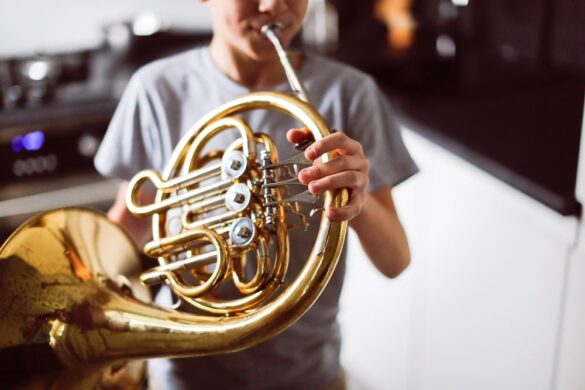Tubas come in numerous and diverse sizes. A tuba is relatively big, and while playing the instrument, its weight rests in either the musician’s chair or knee. The first task is to hold the tuba and ensure that your height aligns with the mouthpiece and that you’re able to reach the valves effortlessly. This guide shall help you acquire the knowledge required to choose a tuba.
Selecting a Tuba to Play
So, you’ve chosen to start taking tuba-playing lessons. You’ve gotten yourself registered, and now you have to buy the instrument to practice and play. Having a musical education is essential for the growth of creativity. It also soothes people when the music you make comes out of your instrument. It’s musical therapy, known to help soothe crying babies and allow them to have enhanced sleep.
Every brass musical device will respond and sound superior while using a mouthpiece that fits the musician and an instrument well, including the tuba. Choosing the finest tuba mouthpiece is a procedure that includes things like cost, tubist embouchure, and the kind of music the tuba performer will perform. The significance of individual preference and truly testing mouthpieces shouldn’t be ignored. Picking the most excellent tuba mouthpiece has a lot to do with the player and the cost, creator, or performer’s playing style.
Cost
Although the quality of the tuba doesn’t necessarily depend on the cost, it’s still an essential factor to consider. After all, you don’t want to spend your hard-earned money on an instrument that is subpar at best. Investing in a good tuba is essential to the greatness of playing; however, fine tubas are also available at reasonable prices. It depends on the kind of budget you have for it. Of course, you can always buy a second-hand tuba, but it’s not suggested because of hygienic purposes.
Color Preference
Though pure brass mouthpieces are accessible, many tuba mouthpieces are coated in gold or silver because most folks have a minor allergy to pure brass. Silver finished mouthpieces are cheaper than gold and tend to eradicate germs naturally. However, remember that choosing a silver mouthpiece means your instrument gets discolored effortlessly, meaning that you’ll have to maintain it regularly. Even though it’s a great choice, people with allergies to gold and silver prefer the plastic option. A performer who plays outside regularly likes to have a plastic tuba because of its durability, lightweight, and the fact that it can endure colder temperatures. If you’re a part of the marching band, a plastic tuba is the best choice for you.
The Style of the Player
Are you aware that the backbore, cup, rim, and throat are all influential on the sound formed by your tuba? Round, wider mouthpieces are more comforting, which allows the tuba player to play it for long, while narrow and sharp rims are more accurate. People who prefer a rich, dark tone go for a mouthpiece with a hefty cup. Consecutively, shallow, small cups can enhance tone and let go of weariness. Close-fitting backbores will yield a bright sound, while wide backbores are smoother. If you can’t seem to decide on the right tuba for yourself, try a few of them before making a final decision. The evolution of the tuba has made it possible for players to become as picky about their instruments as they wish.
Beginner’s Mouthpiece Choice
Consider a small cupped mouthpiece for a beginner who is just starting in tuba playing lessons. It’s ideal for those beginning to enjoy playing the tuba as the smaller cup produces sounds easily. Players having experience in playing other brass instruments or have skills in playing the tuba can try the bigger cup.
Valves
One of the most crucial factors to consider is the number of valves. A tuba player controls the pitch of notes through the valve by depressing them; hence, any additional valves in the tuba, the better its range will be. Tubas come in varying valves of 3, 4, or 5 versions. Usually, tubas only require three valves to play every note on the scale; they still need to have approximately four valves to produce and perform the low-range notes.
Is Manufacturer Important?
Like every other purchase, the cost of the instrument has a direct link to its manufacturer. Suppose you’re not able to find the time to test out tubas; stick to well-known brands that have been around for a while. They have the reputation of producing superior quality instruments. A good and durable tuba will cost more, especially if you wish to invest in a branded one. A good manufacturer considers every factor that goes into producing the best quality sounds.
Final Thoughts
Remember to do your research, look up reviews, and educate yourself before buying a tuba. We hope this guide helped answer your questions on how to choose a tuba. Have an excellent time shopping!

